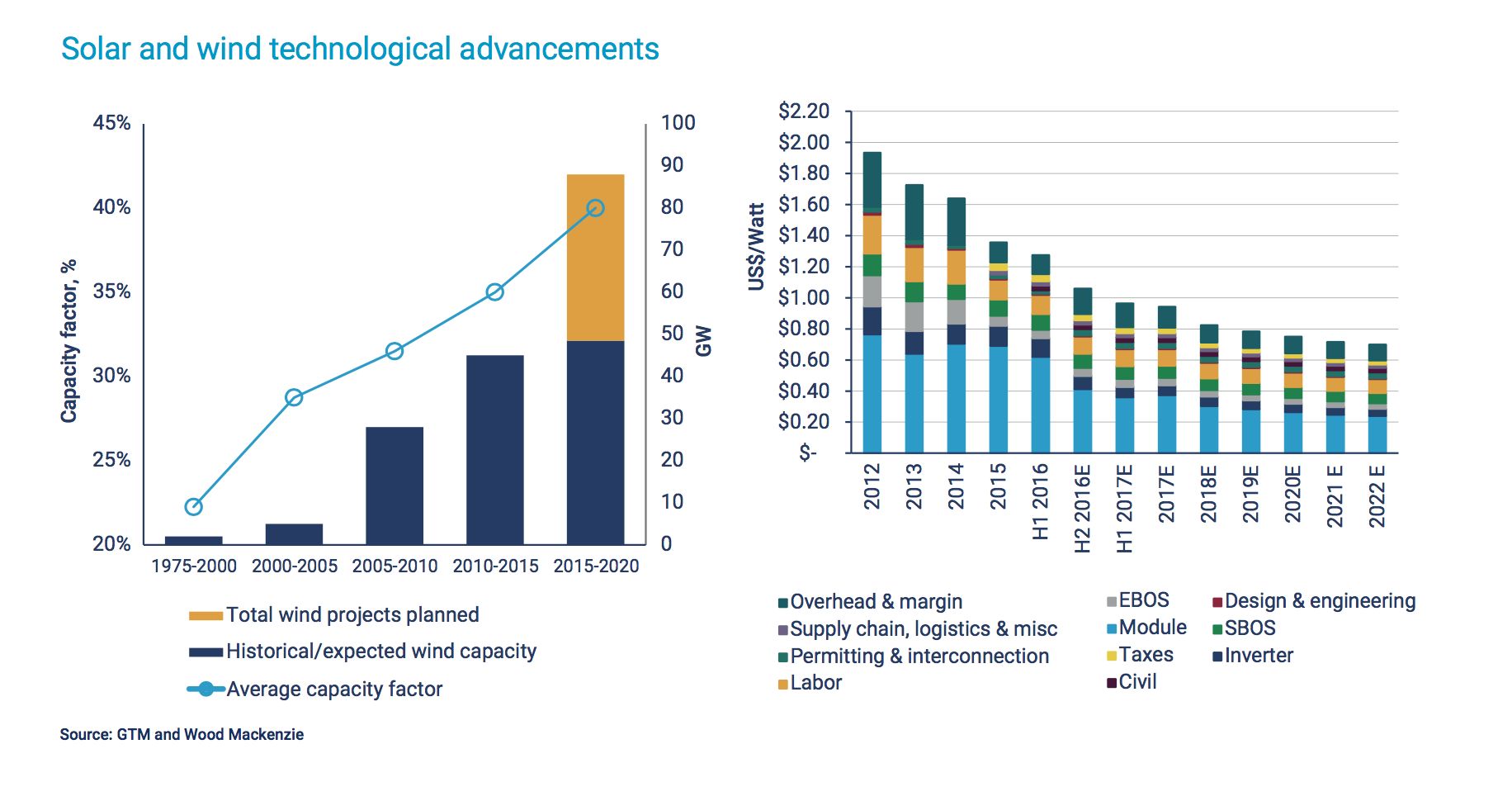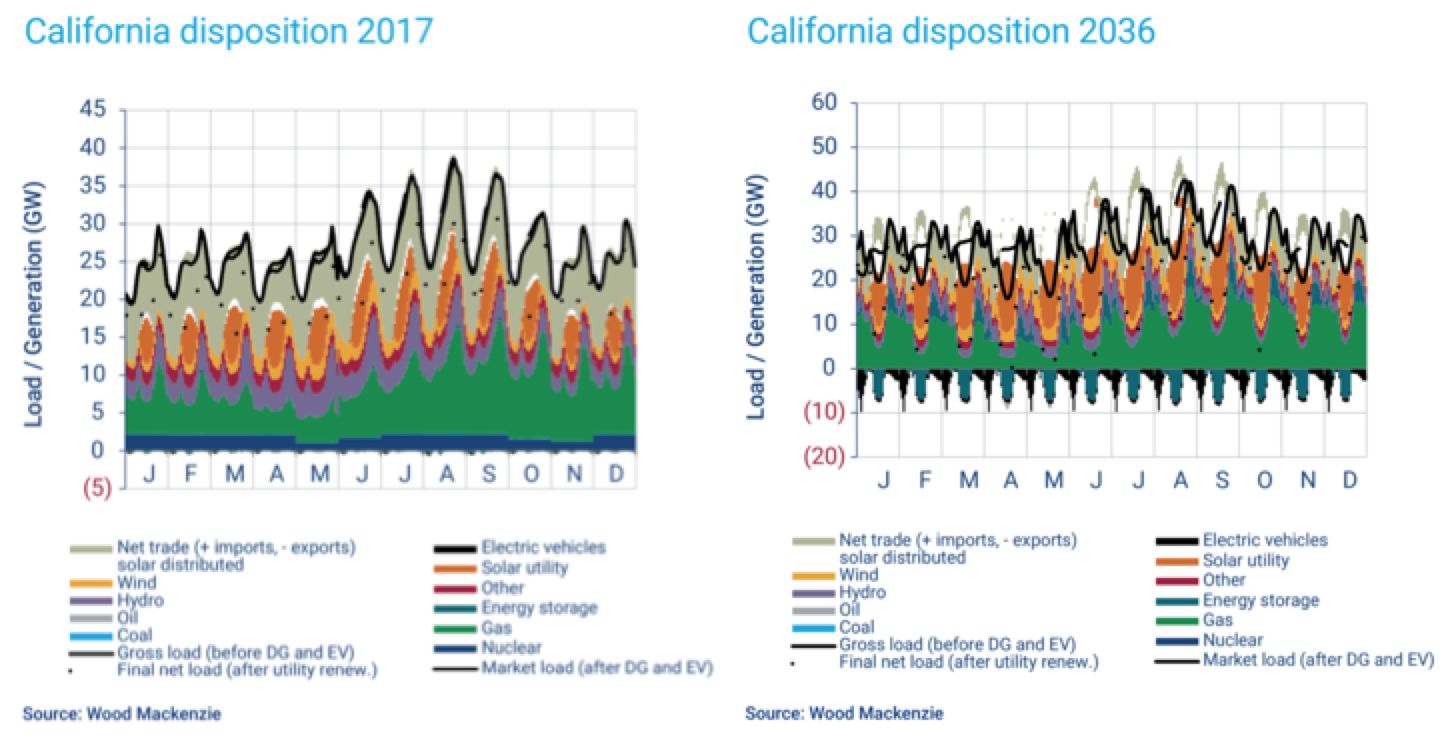Six key markers of market disruption hint that the energy sector might be the next industry in line for upheaval, according to a recent paper from Wood Mackenzie.
In the past century, the rapid uptake of new technologies has completely remade certain markets. Take the conversion from horses to cars for example; just over a century ago, a car would stick out on a crowded street. Thirteen years later, though, a horse-drawn carriage became the outlier.
According to Wood Mackenzie, the energy industry presents all the signs of an industry on the cusp of disruption. Positioned at the center of the shift is the “drive for deep carbonization and the falling cost of renewables,” according to the report. Essentially, the sharp drop in prices, as well as technological advancements, have created a perfect storm to upend energy normalcy.
“This is not just about decarbonization,” said Prajit Ghosh, head of power and renewables research at Wood Mackenzie. “It’s about rewriting the whole economy.”
The first qualifying marker is a vehicle -- such as the smartphone -- that can change how customers utilize services.
In the energy sector, the vehicle is less tangible than something you can hold in your hand: it’s the electrons shuttling through your wires to power everything you do. Natural gas has already overtaken coal as the largest source of power in the United States -- a phenomenon the Trump administration sees as a significant disruption. Now renewables are encroaching on gas, and energy-efficiency gains have decreased demand for electricity.
Wood Mackenzie identifies rapid technological advancement as the second indicator of disruption. “'Rapid' is the core word here,” said Ghosh, offering examples of the swift developments in higher masts and turbine size in the wind sector. Between 2007 and 2016, utility-scale PV systems also fell in price by almost 80 percent. Battery prices have fallen precipitously as well, having already hit cost projections for 2030.
These developments have brought about the third marker: technological convergence. Solar and wind have become more viable as replacements for traditional fuel sources when paired with storage capacity.

The lower costs of renewables, in addition to innovations in battery capacity, led Tesla to become a beacon of another essential marker: technology converging with industry. Since their introduction in 2012, Tesla’s electric vehicles have made up a larger and larger portion of the approximately 17.5 million cars the U.S. sells per year. And although Tesla’s heavily anticipated Model 3 has hit numerous snags, most recently with the company's firing of hundreds of employees, the vehicles have still been able to make the jump from a niche market to a larger audience.
The fact that traditional automakers are eyeing the electric space further illustrates technological convergence with industry. Volvo and General Motors have both committed to dramatically increasing the number of electric models they offer.
The case of electric cars, and their ability to cause a large-scale shift in energy markets, is analogous to Netflix overtaking video rentals. The on-demand entertainment company originally started delivering DVDs to consumers' doorsteps, taking a chunk of demand and putting companies like Blockbuster out of business. But when Netflix began offering streaming and producing original content, it started to go after the larger television industry, compelling many traditional players to innovate just to keep up.
Renewables are applying the same pressure to oil and gas majors. Just last week Shell purchased a Dutch electric-car charging company, announcing it was setting its sights on the electric future.
Ghosh said based on examples like Netflix, it’s essential for the entire energy sector to reflect on the side effects of drastic market shifts. “As you go through this change, you have to think about the unintended consequences…and who comes out as winners and losers,” he said. Many majors have expressed similar sentiments, increasing investment in renewables so as not to be left behind.
In the early 1900s, Ghosh explained, cars were seen as a solution to the piles of manure and rotting horse carcasses clogging city streets -- a win for everyone. But few imagined the invisible puffs of pollution and smog that would come to choke urban areas, the dense highway systems that would change the landscapes of cities, or the cultural repercussions of domestic gender roles in suburban areas. Identifying the deep impacts that renewables have the capacity to inflict on the energy sector will give industry players a head-start on the disruption.
And for electric vehicles or other renewable technologies to deeply upend energy markets in innumerable ways -- much like cars did -- they must also change practices at the consumer level. Ghosh said few people believe they have changed their power consumption, but innovations in the products we use and the efficiency of our power markets have invisibly shifted consumption, which will eventually lead to what the report calls “staggering levels of energy savings.” Renewable markets have also created “prosumers,” consumers that are also producing power from sources such as roof solar panels.
Per the report, the next step in market disruption is digitization, in the form of artificial intelligence and machine learning. Among renewables trends, AI gets less play than diminishing costs and the rising dominance of electric vehicles, but the technology is certainly on the minds of industry players. Google has already been using AI to cut its energy use.
These six market disruptions are already playing out in California -- where there's a mandate to boost renewables to 50 percent by 2030 and cut greenhouse gas emissions 80 percent by 2050. Operational challenges are sure to spring up on the path to deep decarbonization, Wood Mackenzie notes.
A look at California’s average hourly generation mix in 2017 and 2036 "reveals the operational complexity in terms of ramping requirements, overgeneration issues and flexibility, among others," the report states.

According to Wood Mackenzie, the factors at work in the energy industry present all the markers of an industry staring over a cliff. While majors, utilities and many governments are hoping to position themselves in an advantageous position, the report notes that even with preparation, “this will be a bumpy ride.”
--
Come join us for GTM's first annual U.S. Power & Renewables Conference in November. You'll get an in-depth look at how the renewable energy market will interact with the U.S. power market, and how those interactions can impact overall industry development and market growth. Curated by GTM Research, MAKE, and Wood Mackenzie energy analysts, we’ll take an expansive view of key issues and timely topics, bringing together a diverse group of energy experts and stakeholders to discuss demand dynamics, economics and business model shifts, and policy and regulatory implications.




